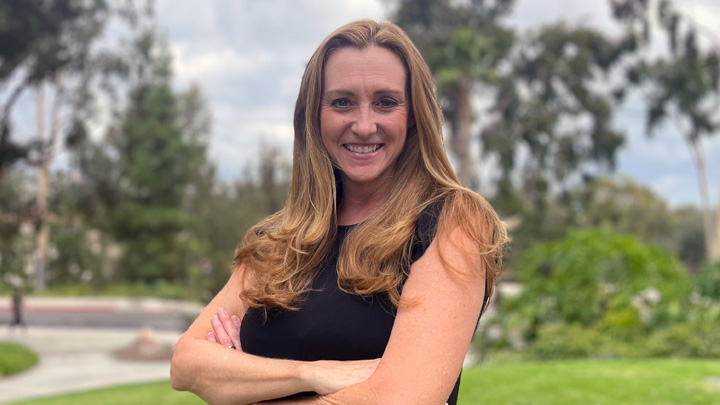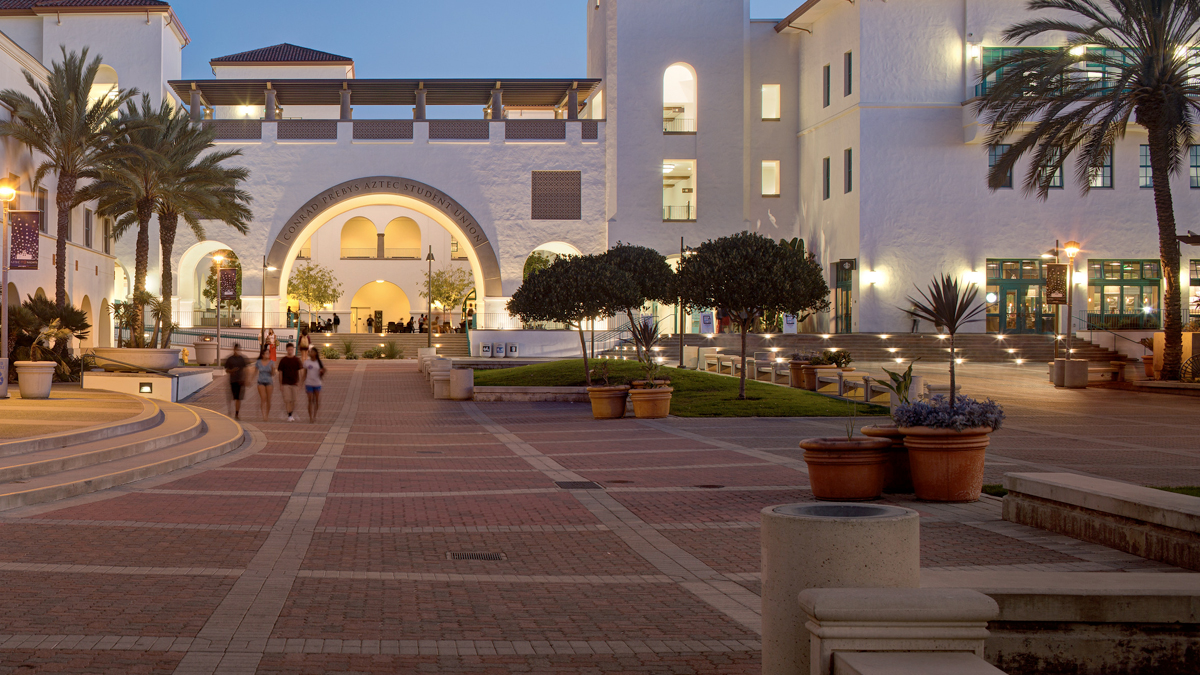Laura Craig runs point on SDSU’s teacher credentialing transformation

Laura Craig was working as an educational aide when she made a decision that changed her life — entering the teaching credential program at San Diego State University.
Of course, doing so meant quitting her district job so she could complete a rigorous student teaching experience. Because she was living with her parents at the time, Craig was able to make it work financially. She completed the program and embarked on a rewarding career as a classroom teacher and — for the past 25 years — a lecturer preparing future educators in SDSU’s School of Teacher Education (STE).
Craig is mindful not everyone who wishes to teach is so fortunate.
"Along the way, I’ve realized that teaching is a profession of privilege,” she said. “I would like to disrupt that model."
This semester, Craig has taken on a new position in the College of Education aimed at doing just that. Craig serves as University/District Partnership Coordinator, a role that facilitates collaboration between SDSU’s three teacher credentialing programs and the school districts where candidates are placed to complete student teaching.
She helps present a unified SDSU voice to the districts while working with them to financially support student teachers in a way that also meets district needs. A major piece of the puzzle is an initiative to compensate candidates called Strategic Staffing, which the university launched last year in partnership with Mae L. Feaster Charter School in Chula Vista. Currently, more than 40 SDSU candidates in two districts are receiving compensation through these efforts, but that is only the start.
“My goal, by the time I retire someday, is to have a model here at SDSU where the majority of student teachers are getting paid in some capacity to do their student teaching,” Craig said. “That’s what will open the field to a more diverse population.”
The COE news team spoke with Craig about how she hopes to achieve that ambitious goal.
Why is it important for SDSU and education more broadly that student teachers get compensated?
"When I'm meeting with our district partners, the common theme that comes out is that they want to diversify their teaching force. They need teachers who look like their students. They also need more bilingual teachers and more ed specialists — special education teachers. Those are the battle cries of all of our local partners. So, in order to meet their needs, we have to recruit differently. We have to change our programs so that we can attract the people that the districts want to hire. That's important to SDSU because we want to be responsive to the needs of our partners. What’s more, many universities across the country are starting to embrace this model. We don't want to be left behind — we want to be on the transformative edge on what's happening in education. The Chairs of DLE (Dual Language and English Learner Education), SPED (Special Education) and STE responded to this need for transformation by advocating for this position to support our cross-departmental work."
On that note, where do things stand right now?
"As far as San Diego County is concerned, we are leaders in this transformative work. We're doing a strategic staffing model in Cajon Valley Union School District and Feaster and we're exploring options with La Mesa-Spring Valley and Chula Vista at the moment. La Mesa-Spring Valley already allows our student teachers to sub once a week for pay so, hopefully, they won’t need an extra job. We are grabbing the low-hanging fruit of sub budgets there. It’s important to know that Strategic Staffing can look different for every district. There's no cookie-cutter way to do it. It just depends on the partner."
Have recent budget cuts at local districts presented a hurdle for strategic staffing?
"So far no, because there are different pots of money. Fortunately, for funding some student teachers, there are many state grants right now for education specialists and high need subject areas. Different funding sources are great because that allows Strategic Staffing to happen in different forms. You can fund students through intern programs, district residencies and most people going into special education can get paid to do their student teaching. The point of Strategic Staffing is to partner with districts to help them find ways in their budgets that are sustainable, so that when a grant runs out, we still have this model running. Districts are eager to support and grow their pipeline of their future teachers ”
Other than advancing compensation for student teachers, what other changes have taken place in our credentialing programs?
"Before we were working in silos. There was DLE, SPED and STE. It was all under the College of Education, but everyone was essentially doing their own thing. But we weren't communicating across departments, which became confusing for our district partners. Over the past six years, we have really transformed our programs to be more collaborative across departments. Now, the chairs get together with (Senior Associate Dean) Dr. Sarah Garrity every other week to talk about cross departmental issues and what's happening in student teaching. We have also implemented new roles, called site coordinators, across all three departments. Not only do they mentor the teacher candidates and mentor teachers, they also are the district liaisons working closely with HR departments at district partners to make sure we're a very solid presence. This year especially, we're starting to see more districts where our DLE, SPED and STE site coordinators are leading governance meetings as a united front representing SDSU. It’s all been really beautiful."
After being in the classroom so long as a teacher and teacher educator, how does this collaborative work suit you?
“I absolutely love it. I feel like I'm making a difference in education. You go on our website and it says ‘Difference Makers Made Here.’ Well I was made here; two of my three degrees are from SDSU. So I feel like through this role, I am living out the vision of the university that prepared me — and taking it to the next level through partnerships."
This interview has been edited lightly for brevity and clarity.

